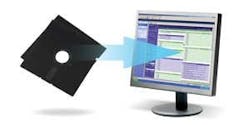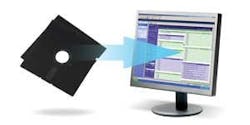I'm Movin' On
For more on this topic, go to www.dentaleconomics.com and search using the following key words: data conversion, practice management, collections, dental software, patient records.
Many offices have used a practice management system for years. Some offices using older products feel that it is doing a "good enough" job, so why bother with the expense or aggravation of changing?
The specter of a data conversion and new training is somewhat overwhelming. Also, some of the new software requires updating or replacing older computers and networks, so it is not just a simple disk-based upgrade. The factors that push people over the edge are many, but a few are more important.
First, if you truly want a digital office and want to reduce paper, there have to be computers in the treatment areas. Some of the older systems are not particularly friendly to this setup. Many offices are using add-on products to create the digital environment. As more features are added, more programs are added. Some work and integrate with the PM software, while others do not.
I have seen many examples in which an office uses one of my favorite programs, Thumbs Plus, to categorize digital photos. Due to the power of this program or another favorite, Image Fx, it is easy to sort through patient names and images; however, there comes a time when it gets clumsy. Also, it is not a simple, staff-friendly system that bounces back and forth between programs.
Unfortunately, offices have personnel turnover. There never seems to be enough time to train a new assistant on the idiosyncrasies of the program management, so the dentist ends up doing the work. (It is almost fun except for the times when you are in a hurry to get to see your child's soccer game.) The new PM systems have this task embedded. So if you bring up the patient chart, the images are there. When you want to add new ones, it is essentially automatic. Granted, you might need some easily accessible USB outlets in the treatment room, but this can be done with today's new computers.
Other reasons for change have to do with dental company acquisitions. One by one, small software companies have been assimilated into a larger product. Some continue on shoestring support, but usually the larger PM company gives a support termination date. While some independents will continue to support old products, those days are numbered. Of course, tinkerers think they can keep the old system running — much like the 1977 car that they love so much. One system called Open Dental encourages users to offer input into the design.
Another reason to change is dissatisfaction with an existing product or company. Sales reps for new companies are quick to show up and offer "deals" if you convert. I don't mean this in a disparaging tone. Some of the companies will trade off volume equipment or supply purchasing toward the cost of the PM system. This makes the investment in the new software negligible. The problem, though, comes when you get to the data conversion. Although a lot of the existing data can be transferred to the new systems, it is not a simple, smooth ride. You have to be prepared to do much manual work before and after the conversion.
To perform a data conversion, you are told to examine existing patient data and verify everything. I have seen a few minor catastrophes — some even in my office. Any incorrect information will be transferred to the new system. This means that a careful look at the patient demographics and accounts receivable is vital. (It is not necessary to bring old treatment details across since, in most cases, the older system is still running so you can check information prior to the conversion.)
You will uncover numerous incomplete charts with missing Social Security numbers. Usually, these are patients who were entered hurriedly, perhaps because they have no insurance. So their information was input with a string of zeros. Then the fun begins.
Often, there are many patients who have not come to the office for a long time yet are still in the system. Some of these patients may be deceased. Many may have moved or left the practice, not all on good terms. Others might have inaccurate family information due to marital changes. Many might show dependent children who have grown up and moved.
The worst problem commonly found is the large number of accounts with balances that were never paid after unsuccessful collections. This can happen when, at a certain point, the office suppresses a statement. In some older systems, these patients are simply omitted from accounts receivable reports and go unnoticed due to bill suppression. An office figures it will catch this with new software reports. Also, there may be many former patients with credit balances that the office assumes it will get back upon a patient's return.
In my practice, we thought we had successfully accomplished this. With our first set of new statements, we were in a hurry to get caught up so we quickly checked the statements and sent them. Then the calls and letters started. Many were returned for "moved — forwarding has expired." Others came back with "person is deceased" or "not my bill" jotted on envelopes in magic marker. One came from an attorney who said that he had not been one of our patients for seven years. He demanded that his account be corrected.
One of the highlights came from a wealthy woman who had a denture and partial made but never returned for post- ops. She sent a letter and a check for one-half of the bill. The letter explained that when she got home from the last visit (eight years ago) she had a lot of pain in the denture so she never re-inserted it. "I know that you did a lot of work so here is half of the bill and let's consider this payment in full." A guilty conscience, I guess. We considered this no fault of ours since she never followed up.
This leads to the need for management of office data. All systems can generate multiple reports. But someone has to spend time checking everything, then doing something about it. No one wants to spend hours going through a couple thousand accounts all at once. So we let matters go another month and figure everything will work out.
Many dental offices are more sophisticated and seem to take every cent seriously. Many practices use the SikkaSoft program that gives a constant analysis of the office financial health. This program can help every dental practice become even better. Go to www.dentaleconomics.com for more information.
This discussion, though, is more about the maintenance of the demographic records. When things are going well, it is easy to let a few accounts slide. But, in the course of 10 years, it starts to add up. Also, since storage space is not at a premium, we can keep years of data on computer hard drives and not really worry about this aspect.
You should take a better look at your patient and family accounts above and beyond the accounting. There are skeletons in these patient records. Start looking at them now in small pieces instead of waiting to do it all at once, like some dentists I know quite well.
Dr. Paul Feuerstein installed one of dentistry's first computers in 1978. For more than 20 years, he has taught technology courses. He is a mainstay at technology sessions, including annual appearances at the Yankee Dental Congress, and he is an ADA seminar series speaker. A general practitioner in North Billerica, Mass., since 1973, Dr. Feuerstein maintains a Web site (www.computersindentistry.com) and can be reached by e-mail at [email protected].

